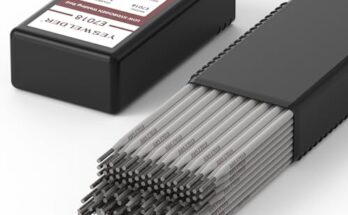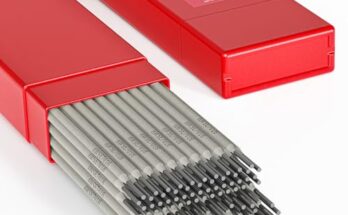Welding different types of metals together always comes with challenges, and joining 309 stainless steel to carbon steel is no exception. I’ve worked on projects where this combination was necessary, and understanding the right techniques and materials is key to getting a strong, reliable weld.

Image by weldingweb
This type of welding is common in industries where corrosion resistance is needed but full stainless steel construction isn’t practical. If you’re dealing with piping, structural components, or repairs, knowing how to weld 309 stainless to carbon steel the right way will save you from potential failures down the line.
Let’s go over everything you need to know, from why 309 stainless is the right choice to the best welding techniques and filler materials.
Why Use 309 Stainless Steel for Welding to Carbon Steel?
The biggest reason for using 309 stainless steel as a filler when welding to carbon steel is its ability to handle dissimilar metals. Stainless steel and carbon steel have different chemical compositions and mechanical properties, making direct welding tricky.
Here’s why 309 stainless is the best option:
- High Chromium and Nickel Content – This prevents cracking and helps bridge the differences between stainless and carbon steel.
- Better Resistance to Corrosion – It creates a protective layer that can withstand oxidation.
- Prevents Brittle Welds – Other stainless grades may lead to weak, brittle joints, but 309 is designed for mixed-metal applications.
- Reduces Carbon Migration – Carbon movement from the steel into the weld zone can weaken the joint, but 309 stainless helps prevent this.
Challenges of Welding 309 Stainless to Carbon Steel
While 309 stainless steel makes welding dissimilar metals easier, there are still challenges you need to watch out for.
- Different Thermal Expansion Rates – Stainless and carbon steel expand and contract at different rates, which can lead to warping or stress in the weld.
- Heat-Affected Zone (HAZ) Sensitivity – Carbon steel can become brittle if overheated, while stainless steel can lose its corrosion resistance.
- Cracking Risk – Without proper technique and filler material, cracks can form due to differences in chemical composition.
Taking the right precautions can help avoid these issues, ensuring a strong and lasting weld.
Best Welding Processes for 309 Stainless to Carbon Steel
Choosing the right welding process is important to ensure proper fusion and strength. Let’s look at the most commonly used methods.
Stick Welding (SMAW)
Stick welding with 309L electrodes is a good option for welding stainless steel to carbon steel. It’s widely used in construction and repairs because it doesn’t require shielding gas.
- Works well for thicker materials
- Suitable for outdoor and high-wind environments
- Produces strong and durable welds
MIG Welding (GMAW)
MIG welding with a 309L stainless steel wire and shielding gas (like 75% argon/25% CO2 or pure argon) provides cleaner welds with less slag. It’s a good choice for production work and thin materials.
- Faster and more efficient for long welds
- Produces cleaner welds with minimal slag
- Requires a shielding gas setup
TIG Welding (GTAW)
TIG welding offers the most precision when joining 309 stainless to carbon steel. It’s commonly used in thin materials, piping, and high-quality applications.
- Uses 309L stainless filler rod
- Provides precise heat control
- Produces clean welds with no spatter
Flux-Cored Arc Welding (FCAW)
For structural work where strong welds are needed without gas shielding, flux-cored welding with a 309 stainless flux-cored wire is a solid option.
- Suitable for outdoor welding
- Works well on thicker materials
- Higher deposition rates for faster welding
Choosing the Right Filler Material
Selecting the correct filler material is essential for welding 309 stainless to carbon steel.
| Welding Process | Recommended Filler Material | Shielding Gas |
|---|---|---|
| Stick Welding (SMAW) | 309L Electrodes | No shielding gas needed |
| MIG Welding (GMAW) | 309L Stainless Wire | Argon/CO2 mix or pure argon |
| TIG Welding (GTAW) | 309L Stainless Rod | Argon |
| Flux-Cored Welding (FCAW) | 309L Flux-Cored Wire | Self-shielding or gas-shielded |
Using 309L (the low-carbon version of 309) helps reduce carbide precipitation, which can cause weak welds and corrosion issues.
Prepping the Metal for Welding
Good preparation makes a huge difference in the quality of the weld. Here’s what I always do before welding 309 stainless to carbon steel:
- Clean the Metal – Remove rust, oil, and contaminants using a wire brush or grinder.
- Use Stainless Steel Brushes – Avoid carbon steel brushes, which can contaminate stainless steel and cause rusting later.
- Bevel the Edges – If welding thick materials, beveling improves penetration and strength.
- Preheat (If Needed) – Carbon steel may require preheating (250°F-400°F) to prevent cracking.
- Control Heat Input – Excessive heat can weaken the weld, so maintain a steady temperature.
Welding Technique Tips
Welding dissimilar metals requires special attention to technique. Here are some key things to keep in mind:
- Use Stringer Beads – Avoid weaving too much, as this can overheat the stainless steel.
- Keep a Short Arc Length – This ensures better penetration and less porosity.
- Monitor Heat Input – If the metal gets too hot, let it cool before continuing.
- Avoid Excessive Filler Metal – Too much filler can cause dilution issues, weakening the weld.
For TIG and MIG welding, using pulse settings can help reduce heat buildup and improve the weld quality.
Post-Weld Treatment
Once the welding is done, post-weld treatment is necessary to enhance durability and prevent corrosion.
- Remove Slag – If using stick or flux-cored welding, clean off slag with a chipping hammer and brush.
- Pickling & Passivation – Helps restore the stainless steel’s corrosion resistance.
- Avoid Cross-Contamination – Use stainless-specific tools to prevent rust formation.
Common Mistakes to Avoid
Even experienced welders make mistakes when welding stainless to carbon steel. Here’s what to avoid:
- Using the Wrong Filler Metal – Always use 309L stainless steel for strength and compatibility.
- Overheating the Carbon Steel – Too much heat can cause warping and brittle welds.
- Neglecting to Clean the Metal – Any contamination can lead to weak or porous welds.
- Ignoring Post-Weld Cleaning – Stainless steel must be cleaned properly to prevent corrosion.
Conclusion
Welding 309 stainless to carbon steel may seem tricky, but with the right materials and techniques, it’s a straightforward process. The key is choosing 309L stainless filler, controlling heat input, and properly preparing and cleaning the metal.
If you’re working on a project where stainless steel meets carbon steel, taking these steps will ensure a strong, reliable weld that resists cracking and corrosion. Whether you’re using stick, MIG, TIG, or flux-cored welding, the goal is the same—a durable and structurally sound weld.
Frequently Asked Questions
Why is 309 stainless steel used for welding carbon steel?
309 stainless is designed for welding dissimilar metals, offering good strength and corrosion resistance.
Can you weld carbon steel directly to stainless steel?
Yes, but you need a proper filler metal (like 309L) to avoid cracking and strength issues.
Do I need to preheat carbon steel before welding?
For thicker sections, preheating (250°F-400°F) can help prevent cracking.
What happens if I use the wrong filler metal?
Using the wrong filler can lead to weak welds, cracking, or corrosion over time.
Can I use 308 stainless instead of 309 for welding carbon steel?
No, 308 is not designed for dissimilar metals and may cause cracking.
By following the right steps and techniques, you can successfully weld 309 stainless to carbon steel without issues.


